By: Hanna Hone and Chantel Doyle – QES Vet Interns – Aug 1, 2019
Hi everyone! It’s finally starting to feel like winter here in Africa. July is their coldest month and we are starting to feel it as this week has been chilly and misty; a stark contrast to even a week ago. Realistically it’s been 15-20 degrees each day, which means there’s no reason for complaints from us Canadians, we simply bundle up for the ride.

(Pic 1: Chillin’ in the mist)
Since the nights get chilly, we decided to make use of the fireplace in our living room for the first time! We bought some firewood from a local shop that builds desks for the schools in the area. Luckily they had a lot of extra wood so we got a great deal and showed up at the house with a full trunk load. The last couple of weeks have been pretty straightforward but we saw multiple cases this week that made up for it. Plus, we followed up with Simba; the dog with the banded testicles that we promised the owner we would perform a neuter on. From a 9-month-old heifer with acute neurological signs, to a cow with an ear infection and even one with a swollen jaw, it’s safe to say that we are always kept on our toes.
On Tuesday we were in Buuri visiting farms and collecting data like any other day. However, at the last farm things started going south, and quickly. As we entered into a heifer pen to get started we haltered and tied the first one like normal. During that time she seemed completely calm but once she was tied up, she began to wobble side to side and lay down. These types of behaviour very uncommonly happen in calves. Those that are extremely “flighty,” or anxious, tend to have the opposite reaction, which is to jump and run and do whatever they can to get away, particularly when they are initially untied after a fall. However, this girl did not immediately leap to her feet and at that point we highly suspected that something else might be going on. With her head held up and her temperature, pulse, and respiratory rate all within normal limits,we continued the exam with her lying down. As we did our work-up, we noted pale mucous membranes within the vulva and the ocular membranes. When we let her go, our fears were quickly confirmed as she stumbled across the pen; this was not just a fear or stress reaction, there was something more sinister going on and it was progressing quickly. As we continued to gain more information, we decided to try and take a look at her oral cavity but were unable to open the jaw. This was very concerning and we began discussing differentials but nothing fit all of her symptoms and clinical signs perfectly. Our problem list included acute ataxia and confusion (stumbling, unbalanced, weak, failed attempts to rise), pale/gray mucous membranes, lockjaw, tachycardia (increased heart rate), bradypnea (decreased respiratory rate) and breath sounds with progressively increased effort and straining but there was no fever. Due to the acute onset and lack of fever our highest differential was a toxicity of some sort and we inquired to the farmer about feed. It turned out that they had started feeding crop waste from Irish potatoes that morning. Unfortunately they contain a compound called solanum which can be toxic to cattle and causes acute onset of neurological signs.
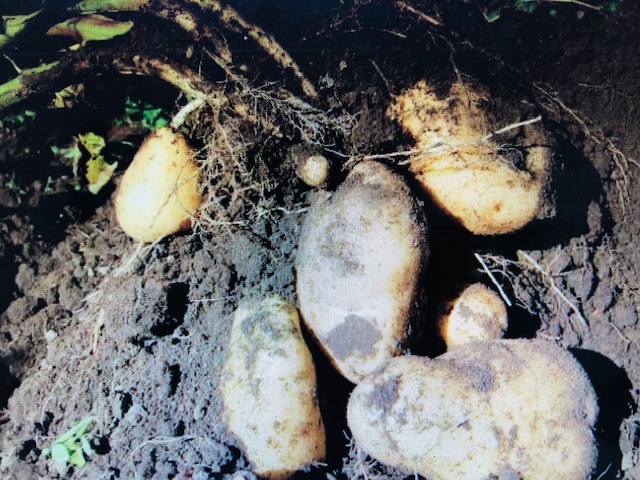
(Pic 2: Irish potatos; a source of solanum toxin)
Like so many other rural areas, Meru County does not have a lab to allow us to do further diagnostics. This left us with limited information with which to make treatment decisions. Based on our extensive physical exam, a detailed history, and active brainstorming with our team we chose to treat with: fluids, specifically isotonic saline IV, to help flush out any potential toxins in her system; an injection of a steroid dexamethasone IV and an antihistamine IM to help with any inflammatory processes occurring. We also advised the farmer to remove any of the other feed in the pen and only feed grasses for the next few days in addition to isolating her in a safe flat cushioned area, and then crossed all our fingers and toes for this little girl. Luckily both of us love a challenge and having to be adaptable in rural field work, well large animal medicine in general, is what we find so exciting and engaging. From the time we arrived to when we started treatment we went from having a calm heifer standing in a stall to a down heifer severely struggling to breathe and we were not optimistic about the prognosis. By the time we left we were amazed to see her able stand on her own for small periods of time but still made sure to warn the farmer that she could relapse and would need to be observed very closely overnight. When we left that farm there was a real mix of feelings including defeat, curiosity and hope. Even with further research when we got home and a consultation with Dr. John, we were still unsure of our diagnosis and course of action. Through some miracle, when we called the next morning for an update, the farmer was quite happy to give us some relief that the heifer had recovered and was walking, eating and drinking normally! Proving once again that cows are some of toughest animals on the planet, and that animals don’t read our textbooks or follow the rules in regards to disease presentation! Many times, medicine can be messy and you won’t always have every piece of the puzzle. We followed our gut, gained as much information from what was available, used our training and were blessed with a happy outcome!
Another neat case we came across was a cow with an ear infection! This may not sound very exciting to most, but something that is so incredibly common in small animal medicine is very rare in adult cows. We took time to look into treatment overnight as well as refresh ourselves on bovine ear canal anatomy and returned the next day with a treatment plan while Daniel finished up his interview. The farmers had noticed the discharge from the ear and were previously advised to treat the ear canal with hydrogen peroxide. Unfortunately this cow had been dealing with the infection for four months with no progress and we suspect these treatments were doing more harm than good. We took time to carefully clean the gunk out of the ear with saline soaked gauze before flushing the canal with saline and drying it. We then followed this with a 5% iodine solution swab to disinfect the canal and another wipe out with gauze before treating with an antibiotic. Because of our limited resources we decided to use a lactating intramammary treatment topically and off-label. It contains two antibiotics that are effective against the common suspect organisms and safe to use topically on the epithelium of the ear canal. As a bonus, one tube is enough to last the famer 5 days of treatment, and the shape made administering the medication into the ear canal easy. While this was definitely not something we were expecting when we arrived at the farm, it was fun to transfer our knowledge and experience with canine ear infections and adapt our resources to come up with an effective plan!
Toward the end of the week we were being escorted around the Buuri zone by one of the Dairy executives; Purity. We had only used a couple doses of vaccine that day, and rather than waste the other doses, we treated some of her open cows and heifers with the vaccine. Purity’s farm is doing very well and doesn’t qualify as a small production dairy, so her animals were unable to placed in the study, but they got the benefit of the vaccine anyway, rather than throwing out the remaining vaccine (once it is mixed, it only last a number of hours). While vaccinating one of Purity’s cows, we were asked to look at a suspicious swelling on the right side of the cow’s face. Through palpation we discovered that the site was solid and firmly attached to, or a part of, the lower jaw! There was also some edema but the lymph nodes felt normal.
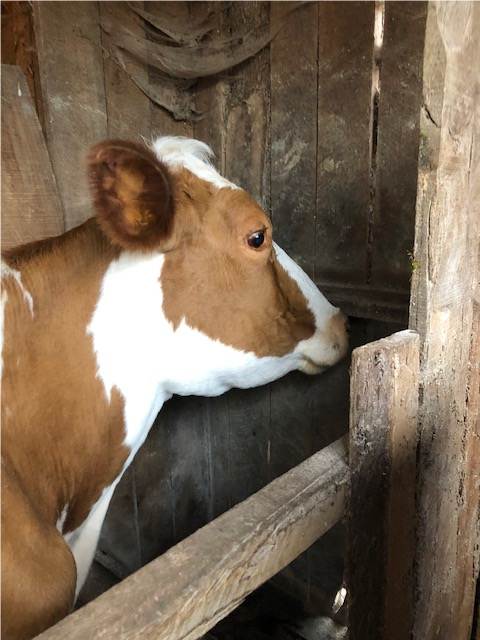
(Pic 3: Cow with Facial swelling)
Our top differential was “Lumpy jaw”, a disease that develops due to a bacterial infection by Actinomyces bovis which gains access to the jaw through small wounds in the mouth that are usually a result of ingestion of tough or thorny feeds. Unfortunately once the infection is in the bone, it is very difficult to treat and we didn’t have the means to provide effective treatment. We will check back next week to assess any changes but informed Purity that, if indeed the infection was in the bone, an available local veterinarian could provide an extended course of antibiotics to try and combat it.
We dedicated Saturday morning to revisit the case of Simba and eagerly showed up at the farmer’s compound to proceed with the neuter procedure.
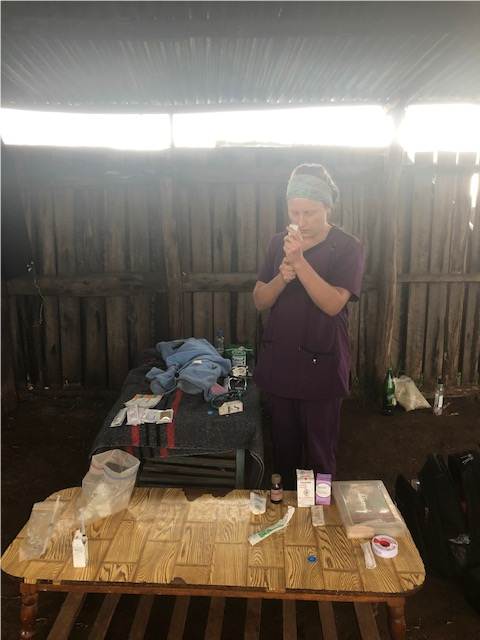
(Pic 4: Surgery suite set up)
On initial exam, he seemed healthy and normal and we were all set up to get going. Because most of our gear is tailored to large animals we had to scrounge for a smaller catheter, which we found in our human first aid kit, to provide IV access for our anaesthetic drugs. The sedative Xylazine was administered IM and had a nice effect while we got the catheter in place. Because this catheter was meant for humans…none of us were familiar… we fumbled through and broke the first one due to a button that we quickly learned recoiled the needle. Luckily we brought a back up! The second attempt (while not perfectly smooth) went better and we were confident we had access. Simba’s IV mixture of Ketamine and Propofol; a dissociative and anaesthetic respectively, seemed to take effect but unfortunately this only lasted long enough for us to finish the first scrub. We placed him on our makeshift surgery table and monitored closely as we “topped up” his dosage again and again but he continued having responses to stimulation even with a local block around the testicles. He had palpebral responses, lack of ventral medial eye roll and mild tongue tone. We were not comfortable that he was in an appropriate surgical plane to proceed with the procedure and we were quickly starting to max out on doses that are safe to give. We decided to give the last dose IV in the other leg in case it was the catheter placement that was causing the drugs to be less effective. Despite our best efforts he refused to succumb and we maxed out the amount we could safely give without compromising his vitals any further. We called off the neuter and knew we’d have to come back with an updated surgical plan. We had a great snuggle in front of a charcoal burner in the little shed the owner set up for his recovery while we awaited his body temperature to normalize after the use of the anaesthetic drugs.
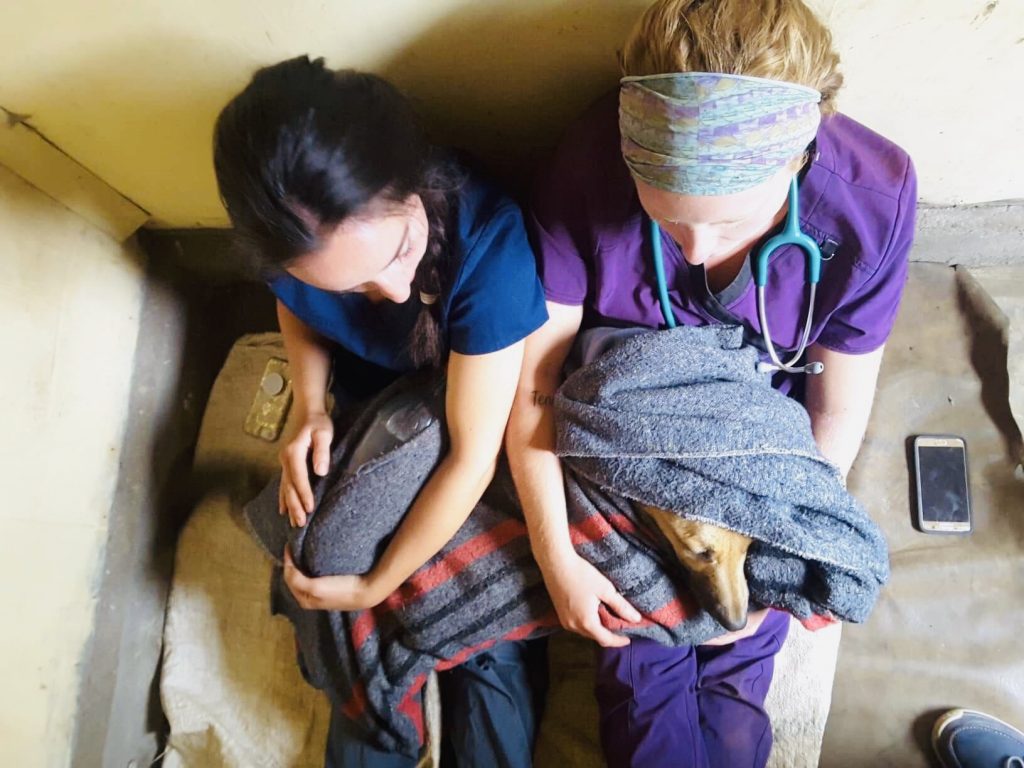
(Pic 5: Simba recovering, snug as a bug )
Unfortunately Simba will have his testicles for a couple more days but we aren’t giving up and promised to return on Monday to try the procedure again.
We restricted Saturday’s work to a half day so we could attend the wedding party of a Meru County couple in the afternoon.

(Pic 6: Speeches under the tent with the Bride and Groom)
While the surgery wasn’t a success the party sure was! We could not understand any of the speeches that were taking place but got pretty excited when a familiar word popped up. We were seated with two other “mzungus” who were here from London to work with school children and being hosted by one of the wedding guests. It was nice to be able to speak some English, meet other travelers and hear about their experiences. Despite the language barrier, it was clear the MC was quite the crowd pleaser with his eccentric booming voice and the non-stop laughter and “awws” from the crowd. We personally loved the dancing. Men and women alike frolicked around the couple as they were cutting their cake and receiving their gifts, and the bride was dressed head to toe in layers of her new presents by the end of the song. We learned that the couple is scheduled to exchange nuptials in December in a far away location so the party was a way for local friends and family, who would be unable to attend, to share in the celebration and dote on the happy couple. The energy in the room was very supportive of the new bride and groom and it was nice to be involved. As another amazing week here in Meru comes to a close we are eager to see what the last few weeks have in store as we start to prepare for our return to school. In the meantime we will keep you updated on our adventures and be sure to let you know what happens with Simba on Monday. Wish us luck!
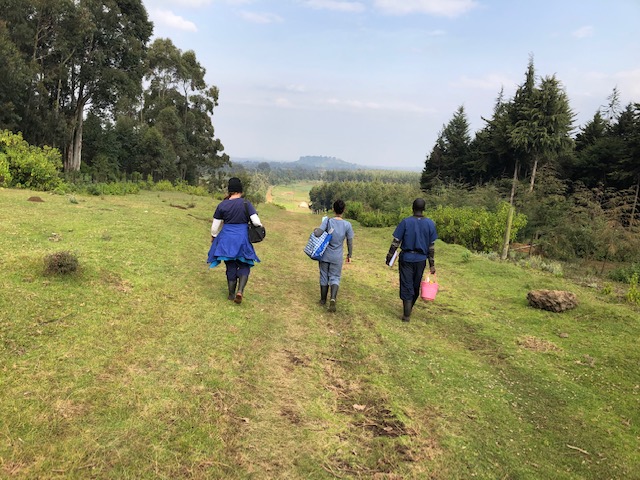
(Pic 7: Dream Team)
Sincerely,
H&C
